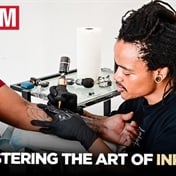
It’s not just those with fair skin who need to be cautious – everyone is at risk of getting skin cancer.
People with darker skin may be less susceptible because darker skin contains more melanin, but you can still suffer the effects of too much exposure to the damaging rays of the harsh African sun.
In fact, research indicates that people of colour are more likely to die of skin cancer than those with light skin.
“Although studies show melanoma incidence among the white population has risen almost 20% in the past two decades, a recent review showed that the five-year survival rate for the nonwhite population is 70%, which is significantly lower than that of white people at 92%,” says Cape Town-based dermatologist Dr Matete Mathobela.
“This may be because melanoma in dark-skinned people usually occurs in odd areas such as the soles of the feet, the toes, under fingernails and on gums, and these areas are often overlooked during cancer checks,” she says.
Here’s what you need to know.
WHAT IS SKIN CANCER?
Skin cancer is the uncontrolled growth of abnormal skin cells. It generally develops in areas that are exposed to the sun but it can also form in places that don’t normally get exposure.
There are two main categories of skin cancer: melanoma and non-melanoma.
Melanoma is less common than other skin cancers but it is the most dangerous. It’s linked with short, sharp bursts of over exposure so even one incident of a bad sunburn, especially in childhood, can later on in life trigger damage and develop into a melanoma.
Non-melanoma skin cancers are basal cell carcinoma (BCC) and squamous cell carcinoma (SCC). These are the most common forms of skin cancer and most frequently, though not always, develop on areas of the body that are exposed to the most sun, such as your head and neck.
These cancers are linked to long-term exposure to the sun and can lead to problems if left untreated.
WHY DO WE NEED TO BE TESTED?
Skin cancer can be cured if it’s found and treated early so it’s important to check then take action when you notice unusual changes to your skin. The Cancer Association of South Africa notes the following A-E warning signs:
Asymmetry – a mole or mark with one half unlike the other. Common moles are round and symmetrical.
Border irregularities – scalloped or poorly defined edges. Common moles have smooth and even borders.
Colour variations and inconsistency – tan, brown, black, red, white and blue. Common moles are usually a single shade of brown or black.
Diameter – larger than 6mm.
Evolve – grows bigger and becomes more prominent. “Melanomas can develop anywhere on the skin but they’re more likely to start on the trunk (chest and back) in men and on the legs in women,” Dr Mathobela says. “The neck and face are other common sites. Darker-skinned individuals are likely to get them on the palms of the hands, soles of the feet and under the nails.”


















